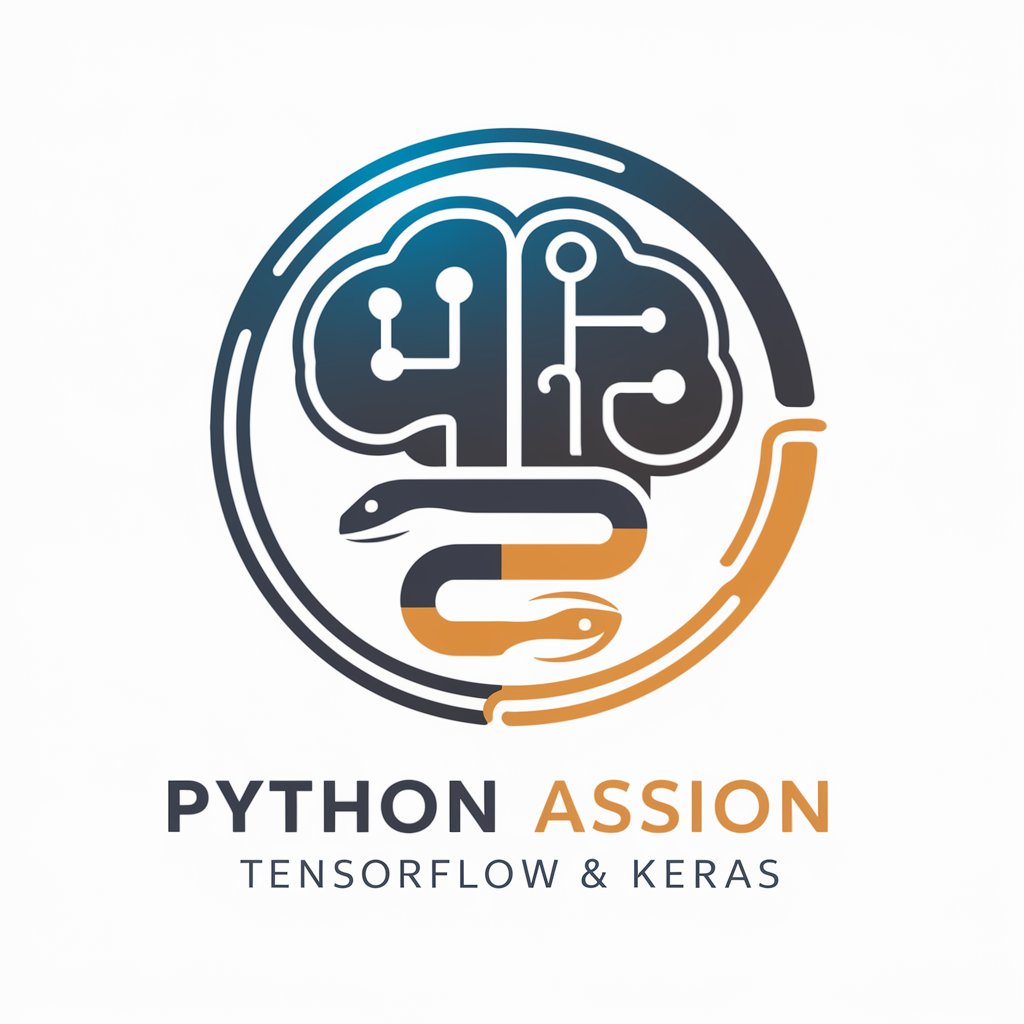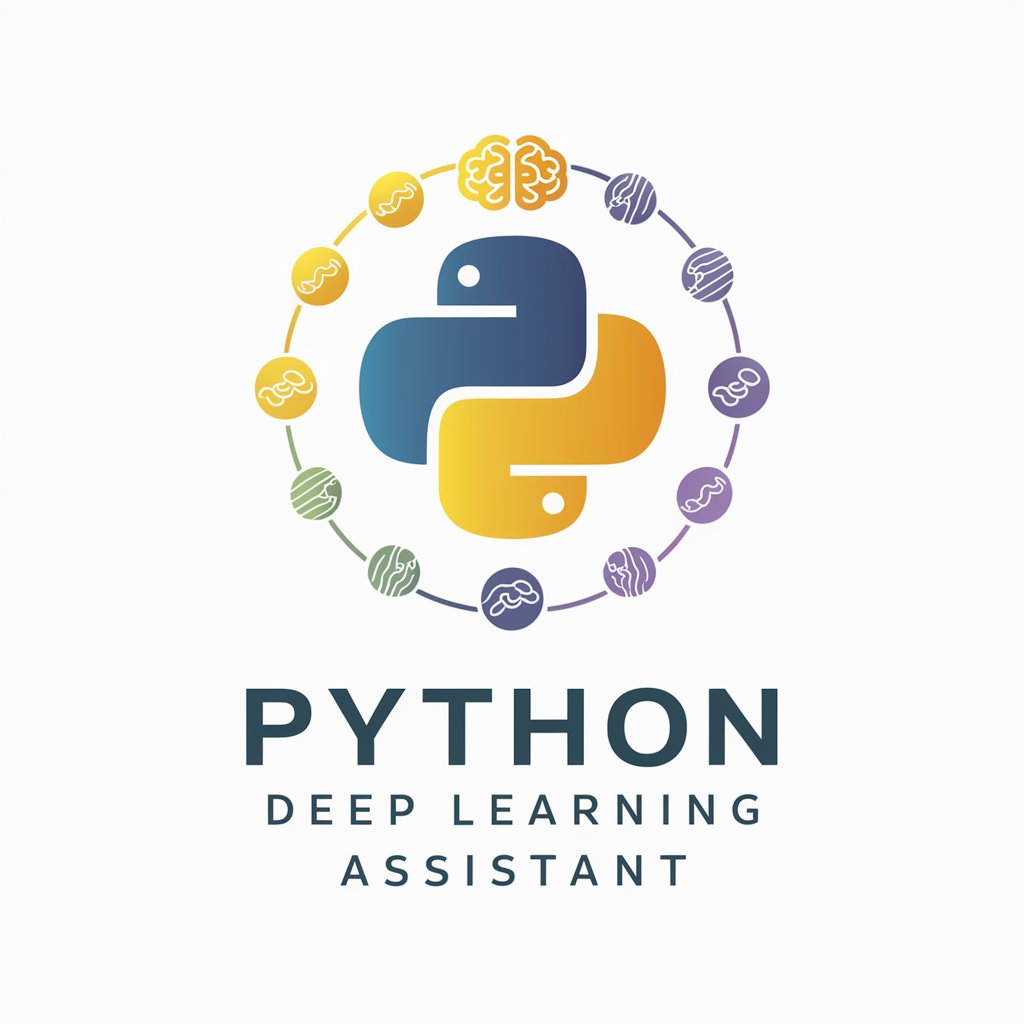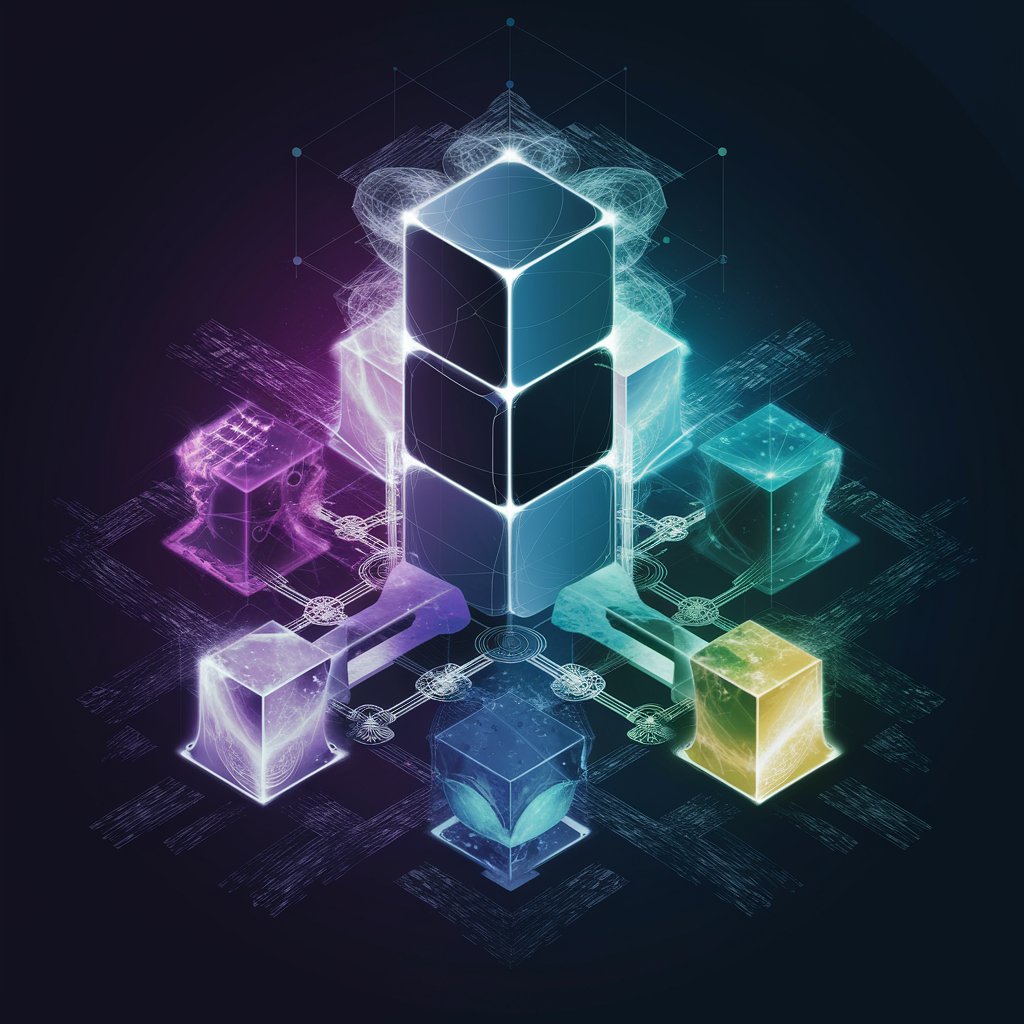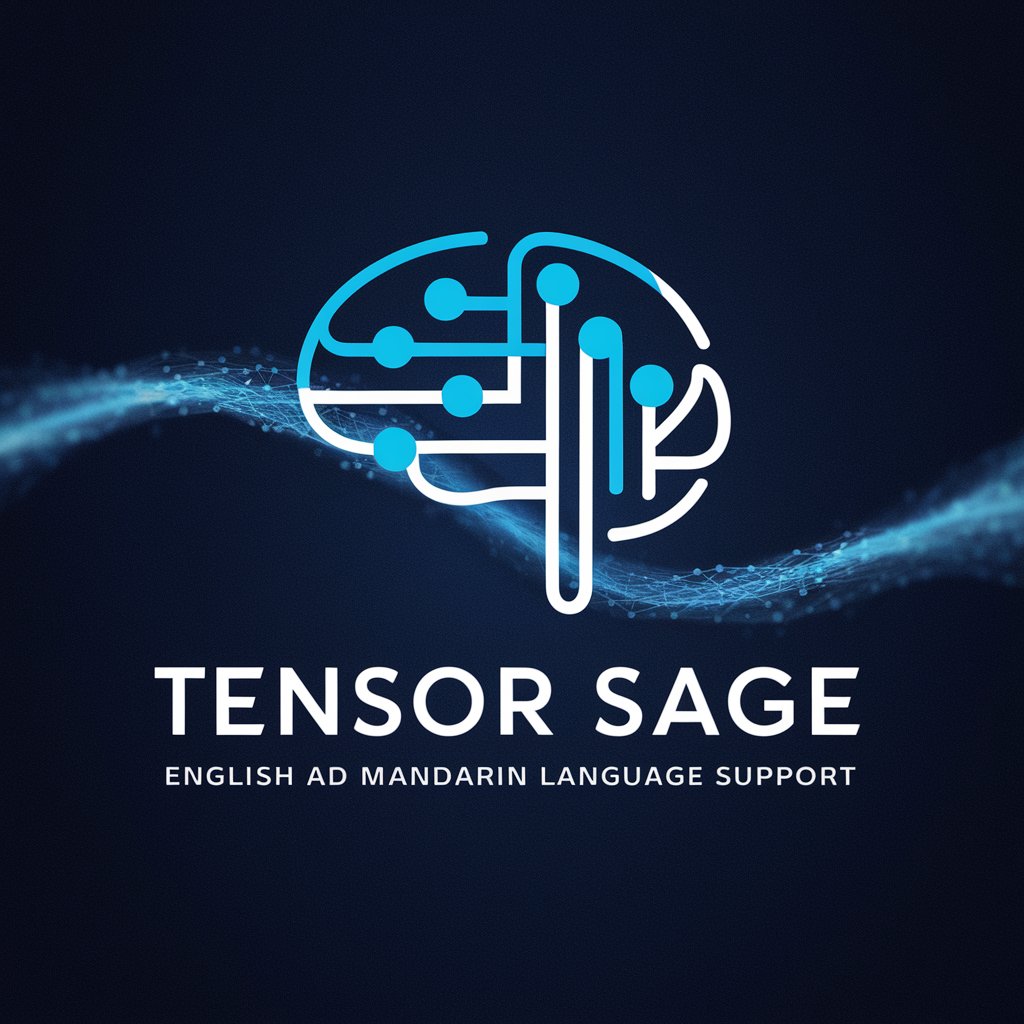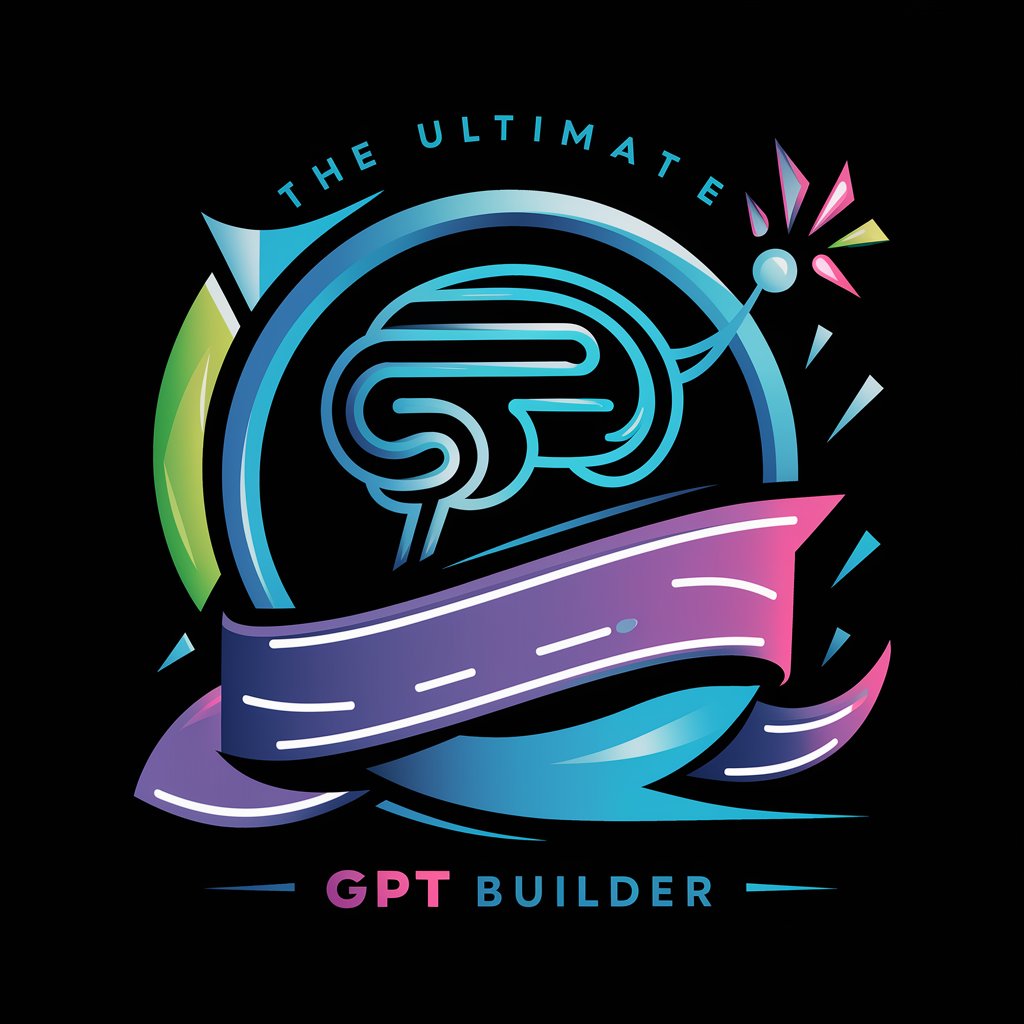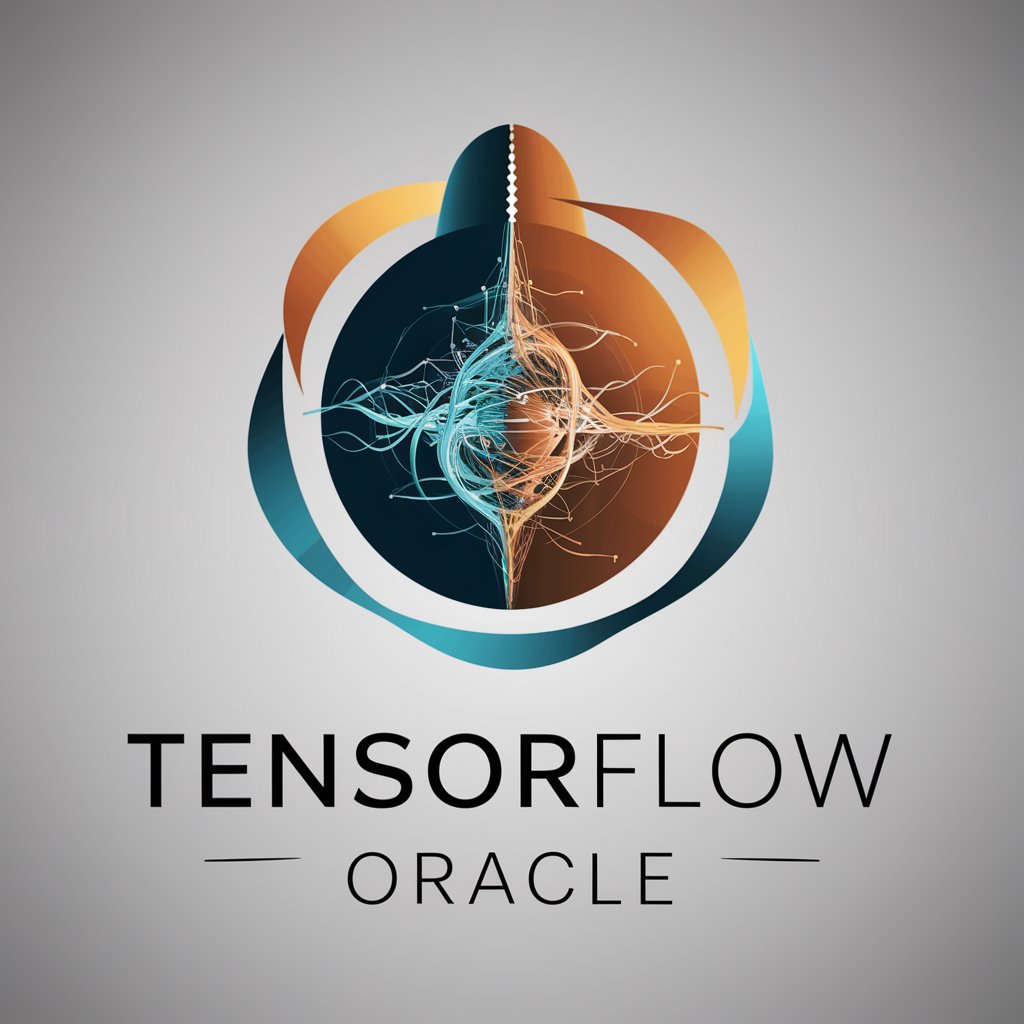
TensorFlow - AI-powered machine learning tool

🟠 Advanced TensorFlow and Keras engineer capable of building any kind of AI model
AI-Powered TensorFlow Made Easy
✏️ Develop a handwriting recognition system
🎬 Create a recommendation system for movies
🪲 Find any bug or improvement in my code
💡 Teach me a useful skill or trick in TensorFlow
Get Embed Code
Introduction to TensorFlow
TensorFlow is an open-source machine learning framework developed by Google Brain, designed to facilitate the implementation of deep learning models and other machine learning algorithms. It allows developers to build, train, and deploy machine learning models efficiently across a variety of platforms, from cloud servers to mobile devices. TensorFlow's primary purpose is to provide a comprehensive ecosystem of tools, libraries, and resources that enable researchers, data scientists, and developers to streamline the development of machine learning applications. Key aspects include computational graphs, automatic differentiation, and flexible architecture that supports deployment on various devices. An example scenario illustrating TensorFlow's capabilities is the development of a computer vision model for image recognition. By utilizing TensorFlow's APIs, developers can construct complex neural networks, optimize training processes, and deploy the model in production environments, such as in mobile apps for real-time image classification. Powered by ChatGPT-4o。

Main Functions of TensorFlow
TensorFlow Core
Example
TensorFlow Core provides low-level APIs for the construction and manipulation of computational graphs. It allows developers to have precise control over operations, such as defining custom layers in neural networks or tweaking optimization algorithms.
Scenario
A researcher developing a novel deep learning architecture can use TensorFlow Core to create customized layers, loss functions, and training routines, which may not be available in high-level APIs.
Keras API
Example
Keras is a high-level API that simplifies the creation of neural networks by providing an intuitive interface for defining layers, compiling models, and training them. It abstracts much of the complexity involved in deep learning tasks.
Scenario
A data scientist working on a classification problem can use Keras to quickly build and train a convolutional neural network (CNN) to categorize images without needing to manage the underlying graph mechanics.
TensorFlow Lite
Example
TensorFlow Lite is designed for deploying machine learning models on mobile and embedded devices. It optimizes models to run efficiently with low latency and small binary sizes on edge devices.
Scenario
A mobile app developer building an augmented reality application can use TensorFlow Lite to deploy a real-time object detection model on smartphones, enabling the app to recognize and respond to objects in the user's environment.
TensorFlow Serving
Example
TensorFlow Serving is a flexible, high-performance serving system for machine learning models, designed for production environments. It simplifies the process of deploying new models and managing model versions.
Scenario
A tech company can use TensorFlow Serving to deploy a recommendation model for a streaming service, ensuring that the latest model versions are used for generating personalized content recommendations.
TensorFlow Extended (TFX)
Example
TFX is an end-to-end platform for deploying production-ready machine learning pipelines. It includes components for data validation, feature engineering, model training, evaluation, and deployment.
Scenario
An enterprise implementing a predictive analytics solution can use TFX to automate and standardize the entire ML pipeline, from data preprocessing to deploying models in production, ensuring consistency and scalability.
TensorFlow Hub
Example
TensorFlow Hub provides a library of reusable machine learning models and components that can be easily integrated into custom applications, accelerating development.
Scenario
A developer working on a natural language processing (NLP) task can leverage pre-trained models from TensorFlow Hub, such as BERT or GPT-2, to enhance their text classification or sentiment analysis applications without needing extensive training resources.
Ideal Users of TensorFlow
Researchers and Academics
Researchers and academics in the field of machine learning and artificial intelligence benefit greatly from TensorFlow's flexibility and extensive libraries. They can experiment with new algorithms, test hypotheses, and develop state-of-the-art models using TensorFlow's customizable features and scalability.
Data Scientists
Data scientists use TensorFlow to develop predictive models, perform data analysis, and automate decision-making processes. TensorFlow's integration with Python, its ease of use with high-level APIs like Keras, and support for complex operations make it a valuable tool for transforming raw data into actionable insights.
Software Developers
Software developers who incorporate machine learning capabilities into applications find TensorFlow useful due to its comprehensive toolset for model deployment and its support for various platforms, including mobile (via TensorFlow Lite) and web (via TensorFlow.js). They can leverage TensorFlow to build intelligent applications with minimal machine learning expertise.
Enterprises and Businesses
Enterprises utilize TensorFlow to integrate AI solutions into their operations, such as customer service bots, fraud detection systems, and predictive maintenance tools. TensorFlow's robustness and support for production-ready pipelines through TFX enable businesses to deploy scalable, reliable machine learning models that drive business value.
Hobbyists and Students
Hobbyists and students interested in learning machine learning can use TensorFlow to explore and build models. Its comprehensive documentation, community support, and the availability of pre-trained models on TensorFlow Hub provide an accessible entry point for newcomers to the field of AI and machine learning.

Guidelines for Using TensorFlow
Visit yeschat.ai for a free trial without login, also no need for ChatGPT Plus.
Start exploring AI capabilities with a free trial on yeschat.ai, no login required.
Install TensorFlow
Open a terminal and install TensorFlow using the command: `pip install tensorflow`. Ensure Python 3.x is installed.
Set Up Environment
Choose an IDE like PyCharm, Jupyter, or VSCode. Create a virtual environment and activate it to manage dependencies.
Write Your First Program
Use a basic TensorFlow script to build and train a simple neural network. Familiarize yourself with core TensorFlow methods like `tf.keras.layers`.
Optimize & Deploy Models
Leverage TensorFlow’s features such as TensorBoard for model visualization and TensorFlow Serving for model deployment.
Try other advanced and practical GPTs
Tennis GPT
AI-powered tennis insights and analysis.

giantess工房
AI-powered giantess stories and profiles.

R Programming
AI-powered R for smarter analysis

Viral Commenting
AI-powered comments for smarter engagement

Comment LinkId
AI-driven comments to boost engagement

MESTRE NÍVEL TÉCNICO PROVA DISCURSIVA
AI-powered discursive question generator for technical education.

Blender Copilot
Blender Copilot: Your AI-powered Blender assistant.

帮我吵架
Craft sharp, sarcastic comebacks with AI.

Quick, Smart & Direct
AI-powered assistant for direct solutions.

Quinn Bot - Top of Mind Questions
AI-driven tool to uncover your audience's top questions

林黛玉GPT
AI-powered tool for creative, emotional dialogue.

주식 발굴단 (고성장주 발굴중)📈
AI-powered stock insights for growth investors.

Top 5 Questions About TensorFlow
What is TensorFlow mainly used for?
TensorFlow is primarily used for machine learning, deep learning, and AI applications like image classification, natural language processing, and neural network training.
Is TensorFlow difficult for beginners?
TensorFlow can be challenging at first, but with extensive documentation and tutorials, even beginners can start building models. Keras, its high-level API, simplifies neural network creation.
Can TensorFlow run on both CPU and GPU?
Yes, TensorFlow can run on both CPU and GPU. Using a GPU can significantly improve performance for large-scale models.
What programming languages does TensorFlow support?
TensorFlow mainly supports Python, but there are bindings for JavaScript (TensorFlow.js), Swift, Java, and C++.
How do I visualize my model in TensorFlow?
TensorFlow offers TensorBoard, a tool to visualize model graphs, training metrics, and more, providing insights into the training process.
